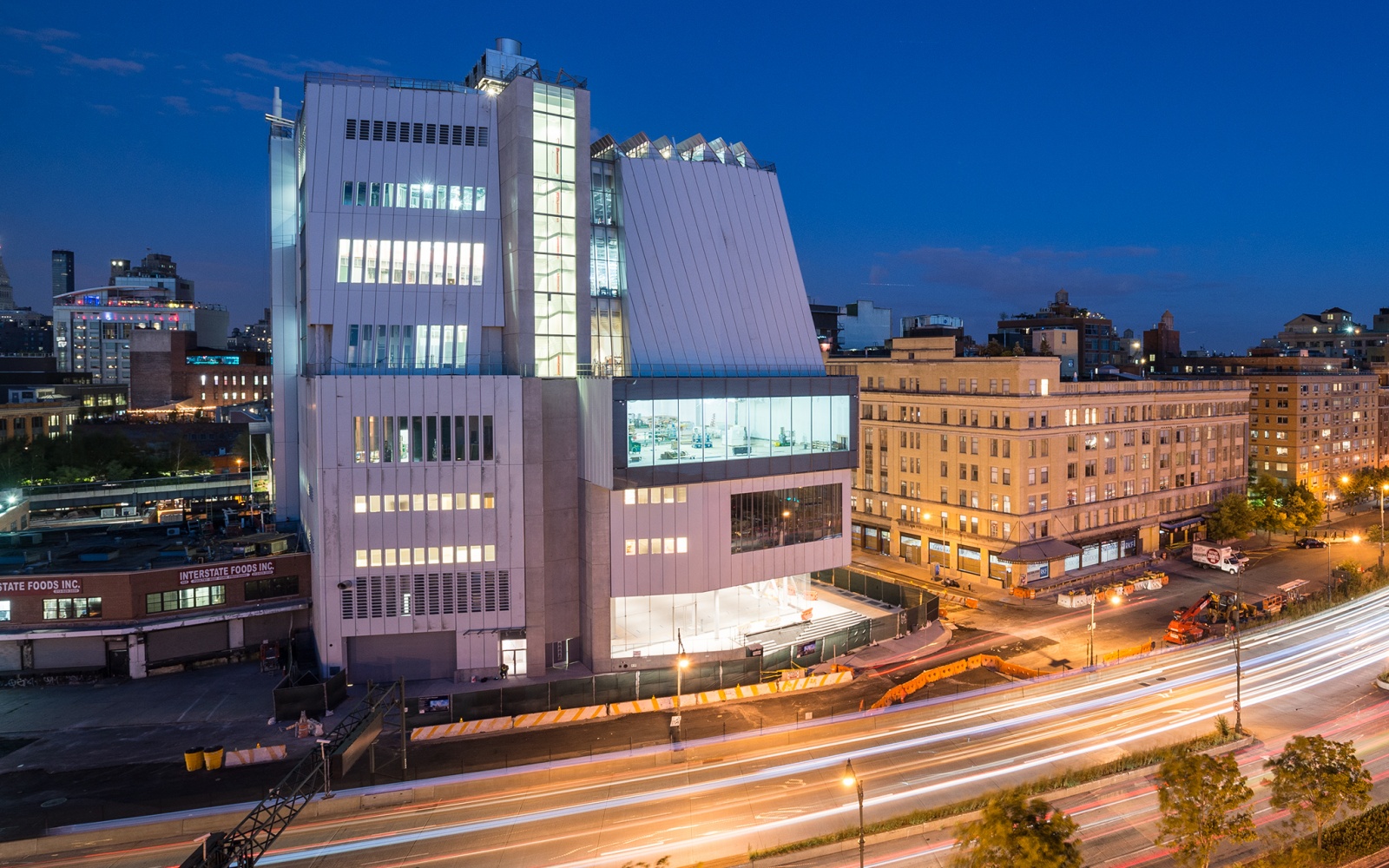
On May 1, New York City’s Whitney Museum of American Art will trade its 5,000-square-foot uptown address for an ultra-mod, Renzo Piano–designed, space along the High Line. The new digs are five times the size, making room for never-before-seen works. Here, Chief Curator Donna de Salvo talks about the move and the four new pieces she’s excited to exhibit.
The opportunity to find a space in such an unusual location is pretty rare in New York. Once we [the senior staff] made the decision not to expand on the existing site, we looked downtown. Real estate in this city is more often than not about verticality, but in the Meatpacking District, we had the opportunity to have expansive vistas of the river and the city, as well as the proximity to the areas of Chelsea and Greenwich Village—which was the location of the first Whitney Museum, built in 1931. The area’s great history, including that of the original museum, was so unusual to find.
The most distinct difference, really, is the substantial increase in gallery space. Whereas Breuer was only 5,000 square feet, the Renzo Piano design will be 25,000 square feet. Increased space means more possibilities and flexibility in terms of what we can do. Other elements the Whitney never had, and now does: a studies center, where visitors can make appointments to view prints, drawings, and photographs from our collection, as well as a reading room library, conservation center, education classrooms and studios, and even a theater. These are amenities we never had uptown, each of which makes the building and museum as a whole a place that can grow in dramatic ways for research and access.
Absolutely. There was an active conversation between myself, director Adam Weinberg, and architect Renzo Piano. A curatorial voice was also definitely at the table, as we ourselves will be actively using the spaces and bringing in the artists. The process was extremely collaborative and worked through a variety of voices, from art handlers and conservators to educators.
Collectively, the four pieces discussed below represent the breadth of media and span of time in our current collection. Now that we will have more space to show work, we can actually take on more pieces, so most of these are new acquisitions. We are thrilled to expand our holdings of these artists.
Torn Movie Poster (1931), Walker Evans.
This conical piece expands the Whitney’s current holding of works by major prewar American photographer Walker Evans. The recent gift is a testament to the commit of our patrons and trustees, and to the new space we now have to showcase works like this one. There’s a romantic quality in this piece—a sense of loss, of being in the past. I’m always interested in how an artist looks at the world.
Free Man’s Duties (#2) (1943), Hugo Gellert.
Very few complete portfolios (which consist of multiple images by the same artist depicting the same subject) exist in museums. With this recent acquisition, the Whitney now holds the complete portfolio of this specific series, which illustrates a speech given by Secretary of State Henry Wallis on the Century of Common Man. During the 1940s, the focus of American artists shifted to places beyond American soil—specifically, the Soviet–U.S. effort to fight fascism. Because of this, there became a kind of hybrid nature in American art. In this piece, we see a strong man picking up U-boats in a powerful palette of yellow, blue, and red—a striking graphic sensibility common in protest posters.
Women Free Angela (1971), Faith Ringgold.
The period between the late ‘60s and early ‘70s in American art depicted a very particular moment during WWII involving the civil rights movement and rise of feminism. Artists like Faith Ringgold began producing deeply political works and communicating opinions through bold, graphic styles. This recent acquisition references radical activist Angela Davis using the colors of the Black Nationalist Movement, bringing together word and image in a powerful way. For Ringgold, there’s a sense of what’s possible and what can still be changed.
Does Marilyn Monroe Make You Cry? (1988), Louise Lawler.
Artists of the “Pictures Generation,” which emerged in the 1980s, began to pick apart how we look at culture. Here, Lawler photographed a Warhol painting of Marilyn Monroe in an auction house. Many things are happening in this work: there’s a particular pathos in the image, which looks at an icon no longer living, and a sadness that materializes from seeing the painting in a marketplace—it transforms the person into a commodity. Does Marilyn Monroe Make You Cry?, like many of Lawler’s pieces of the time, serves as commentary during a period engaged in the great art market boom of the 80s. Monroe was a fabricated image herself. Warhol built on that image, and Lawler herself built on that—layer upon layer, each rendition has its own meaning.